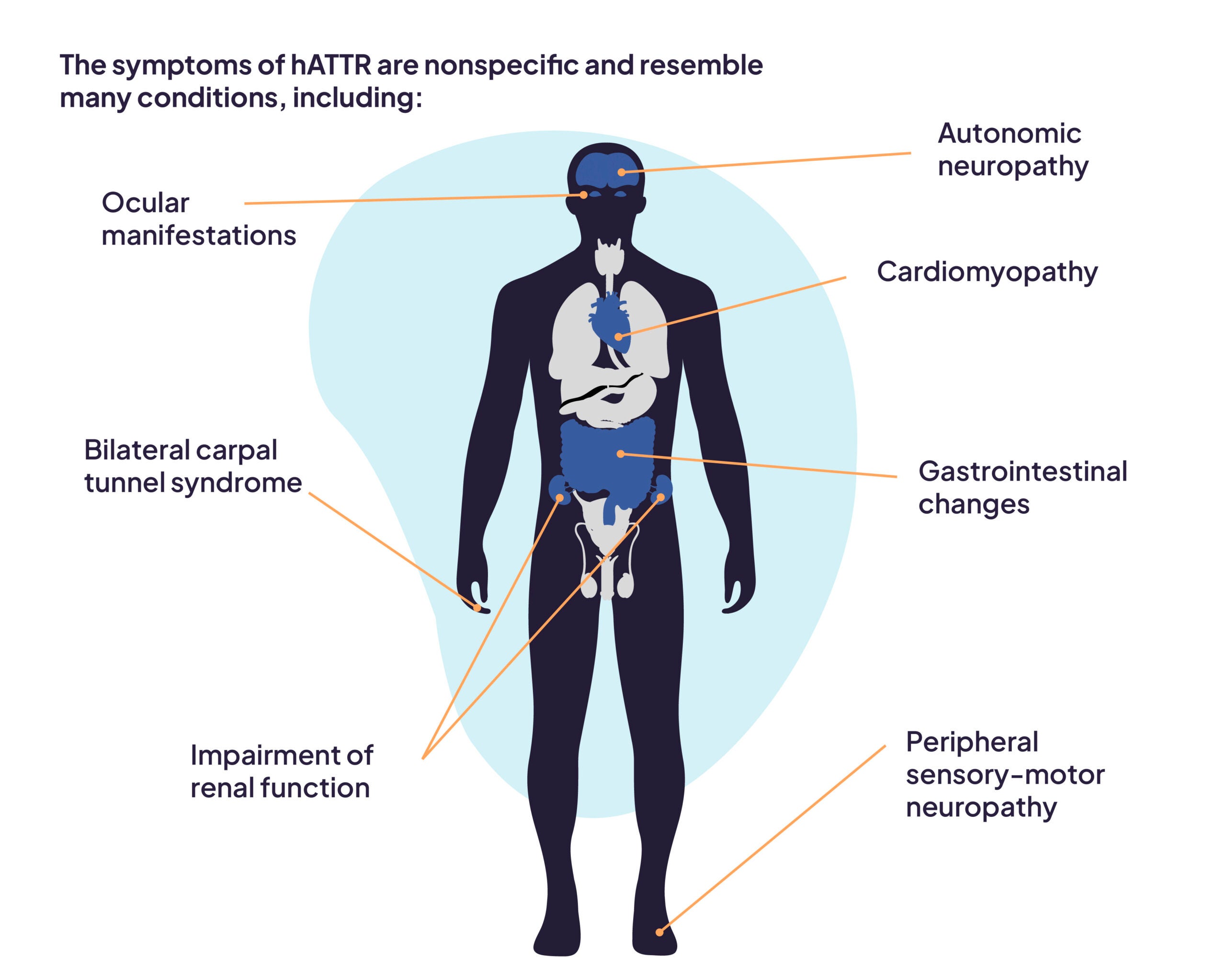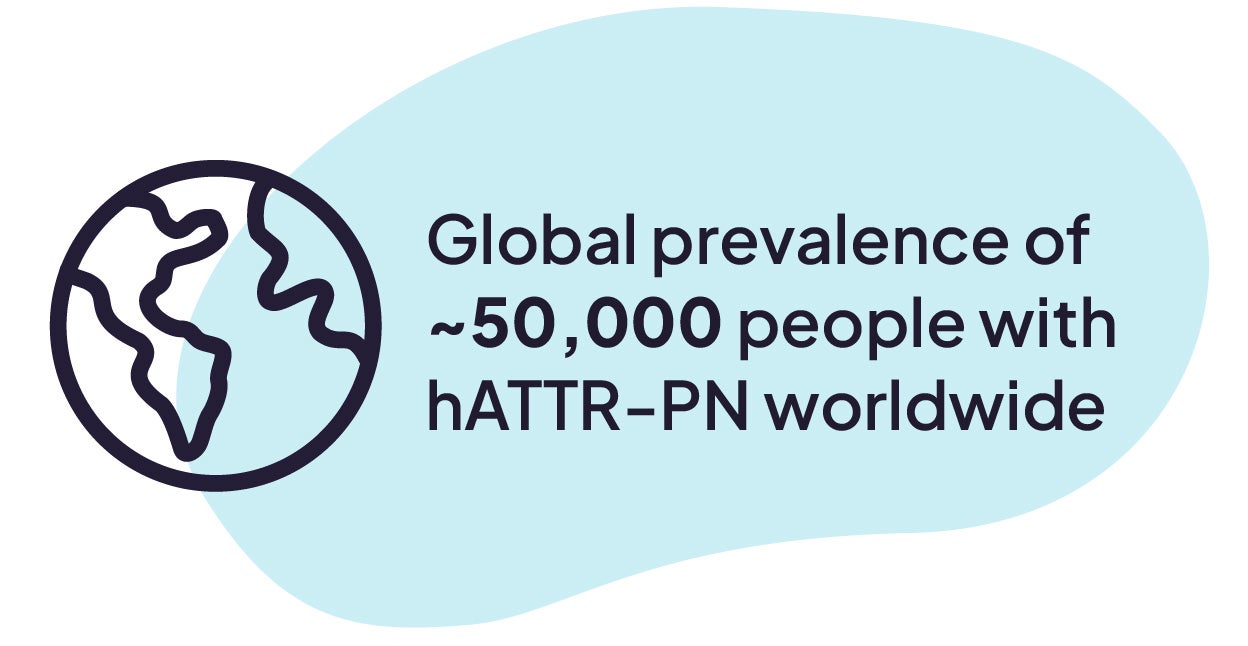Hereditary Transthyretin Amyloidosis (hATTR)

What is Hereditary Transthyretin Amyloidosis?
Hereditary transthyretin amyloidosis (hATTR) is a rare, progressive and fatal disease. In hATTR-PN, the clinical manifestations are multisystemic and debilitating, with significant psychological and familial impact1,2. The disease can be influenced by the TTR genotype, geographic location, or other genetic and environmental factors. Therefore, the symptomatology, age of onset of symptoms, and rate of progression vary among patients.
The symptoms, which are nonspecific and resemble many conditions, include1,3:
- Autonomic neuropathy
- Peripheral sensory-motor neuropathy
- Gastrointestinal changes
- Ocular manifestations
- Cardiomyopathy
- Impairment of renal function
- Bilateral carpal tunnel syndrome
Differential Diagnoses3
The signs and symptoms of hATTR are diverse and variable, which contributes to patients receiving incorrect diagnoses during their journey and further delaying access to the correct treatment. Among these differential diagnoses, the most important are:
- Toxic neuropathies
- Diabetic neuropathy
- Leprosy
- Chronic Inflammatory Demyelinating Polyradiculoneuropathy (CIDP)
- Charcot-Marie-Tooth disease
- Fabry disease
- Hereditary autonomic and sensory neuropathies
- AL or primary amyloidosis (light chain immunoglobulin fragments)
How common is Hereditary Transthyretin Amyloidosis?
There are about 50,000 people with hATTR-PN worldwide1. V30M mutations are predominantly found in Portugal, Spain, France, Japan, Sweden, and in countries with descendants from these regions, such as Brazil3, however, more than 150 pathogenic variants are already known worldwide4.

How is PTC Working to Treat Hereditary Transthyretin Amyloidosis?
PTC has a therapy to treat patients with hereditary transthyretin amyloidosis with polyneuropathy available in the U.S., European Union and Brazil. PTC has in-licensed the therapy in Latin America.
[1] Gertz MA. Hereditary ATTR amyloidosis: burden of illness and diagnostic challenges. Am J Manag Care. 2017 Jun;23(7 Suppl):S107-S112. Review. PubMed PMID: 28978215.
[2] LOPES, Alice et al. Life Paths Of Patients With Transthyretin-related Familial Amyloid Polyneuropathy: A Descriptive Study. Journal Of Community Genetics, [s.l.], v. 9, n. 1, p.93-99, 19 out. 2017. Springer Nature. http://dx.doi.org/10.1007/s12687-017-0338-0. Disponível em: .
[3] Pinto MV, et al. Brazilian consensus for diagnosis, management and treatment of hereditary transthyretin amyloidosis with peripheral neuropathy: second edition Arq. Neuropsiquiatr. 2023;81(3):308–321. DOI: https://doi.org/10.1055/s-0043-1764412.
[4] Ando Y. Guidelines and new directions in the therapy and monitoring of ATTRv amyloidosis, Amyloid, 2022. DOI: https://doi.org/10.1080/13506129.2022.2052838
Do you have questions?
Please reach out if you would like to speak with us.